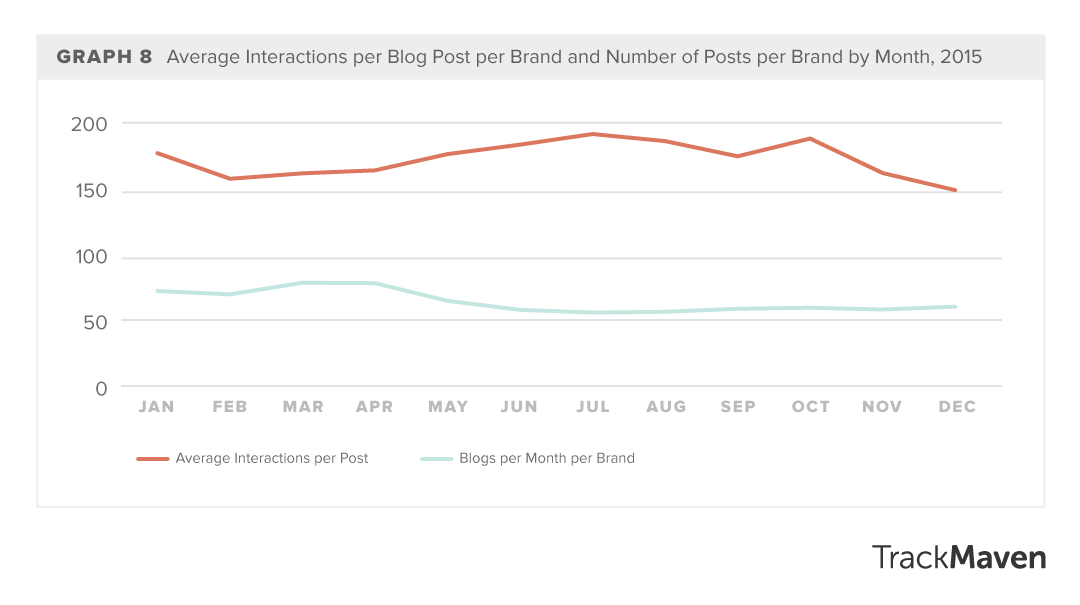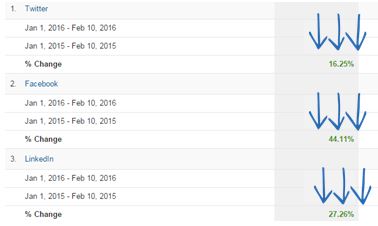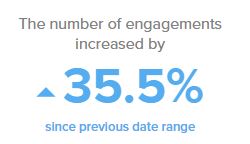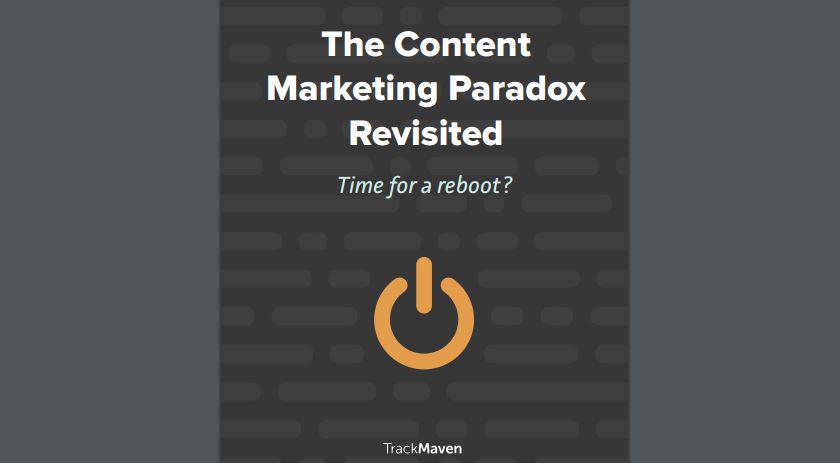In TrackMaven’s newly published “The Content Paradox: Revisited” report, there’s a clear message: Over the past year, marketers have been jumping onto every social channel their audience has heard of, and as a result, they’re bringing too much content to the table with not enough strategy.
The report, which examines 22,957 brands producing content throughout 2015, delivers several compelling new stats to prove that this approach doesn’t work. For instance:
- Content production increased 35 percent per channel across 2015, but content engagement decreased by 17 percent.
- Pinterest saw the most brand interactions per month of all social networks, at roughly 72-92 pins. However, in 2015, the average engagement ratio per post on Pinterest plummeted 49 percent.
What’s happening on social media today reminds us of what happened on brands’ websites about five years ago. Back then, brands were producing more and more content in part because that’s what algorithms were rewarding, but also because they wanted to get their brand’s message out to anyone who would listen.
Google algorithms like Panda and Hummingbird started rewarding quality over quantity, even if that meant marketers had to cut back on how many pieces were produced every day. Marketers understand this: According to TrackMaven, blogging frequency on websites decreased 16 percent, but engagement rates remained steady.

2 times our clients proved less is more with content marketing
On a blog:
For our client that offers personal and business finance management classes, getting people to enroll in classes on their website was a challenge. They recognized that they needed the content to boost brand awareness, build trust and show authority. When we started creating longform content instead of short, frequent articles, they saw 12 percent more organic traffic in first quarter and a 27 percent increase in conversions.
On Twitter:
One business in the health and beauty field that sells equipment to physicians – worked with us to create a strategy that opened up dialogue with professionals using the products for their patients.
Rather than just posting a headline with a link, our social strategists identified companies tweeting about their products and continued the conversation, inviting them to share pictures and share more information. When they pursued interactions with questions like, “What did your customers think?” and “How did the interview go?” they took engagement to the next level. We’re talking:
- 40% increase in total followers
- 91% increase in Favorites
- 194% increase in replies
- 159% increase in Retweets
How can you figure out the perfect balance of how much to post on social?
Today, Facebook’s algorithms don’t reward more content, but marketers know their competition to get onto audience’s Newsfeeds means they need to have a presence that’s consistently updated.
But according to Brafton Social Media Manager Sumit Sharma, there is not a “fits all” number when it comes to posting frequency.
“We believe in creating a unique social media strategy for each business and the frequency of posting is determined based on several factors,” Sumit said. “This includes their industry, target demographic, seasonality and the social network itself. In the end the idea is to have a consistent presence while ensuring we are not bombarding our followers with meaningless content just for the sake of posting a certain number of times each day. Finding the balance between maintaining frequency without sacrificing the quality is the key to success.”
A look inside OUR social media strategy
Here on Brafton’s creative marketing team, we took our own advice and decided to experiment with posting less frequently to both Twitter and Facebook since the start of 2016.
Posting less meant putting more thought into each message we send out. On Twitter, we went from about 8-10 updates a day to roughly 4-5. Facebook posts went from once a day to 4-5 posts per week.
While the results are preliminary, across the board we’ve seen both better engagement and referral traffic already this year in comparison to last year:


Want to learn more?
Get TrackMaven’s “The Content Marketing Paradox Revisited”
Check out more social media marketing articles from Brafton:





